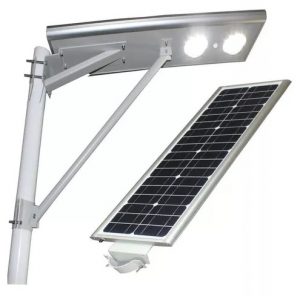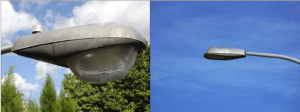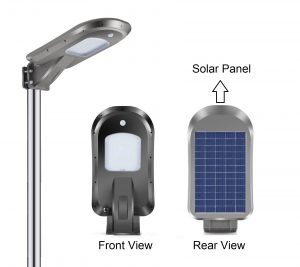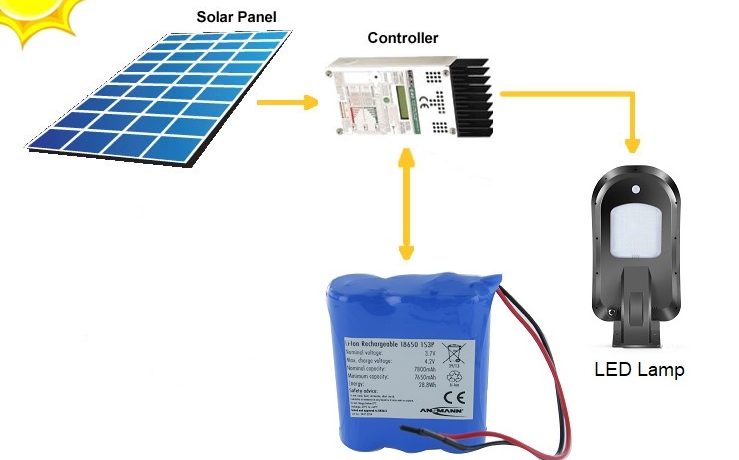Solar street lights are becoming popular as it is able to create awareness as the best option for sustainability and eco-friendly alternative. These lights do not need much maintenance and are best as a renewable source of energy. There are many other factors which add up to the list of advantages of using a solar street light but do we really know how these solar lights works and how they are fixed? Not really right! Until and unless one has used them the mechanism behind these lights will be unfamiliar to many.
In this blog we will try to understand how the whole process of solar street light works. A Solar Light basically consists of solar panels, LED Lamp, charge controller, battery. They are grid free and can run under extreme weather conditions. They can light up from dusk to dawn with auto adjustable configuration such as split time or by using the adaptive lighting technology.

What powers a solar street light?
The solar panel which is mounted to the top of the pole facing south with no shading is wired to a battery located directly under or behind the solar panel system.
When sunlight falls on the solar panels it charges the batteries during the day and stores it to provide energy to operate the solar lights at night. Many things are taken into consideration while designing these lights installation location, winter weather conditions, local AASHTO wind load requirements, and system operation profile to make sure the end users get maximum benefits out of this.
Street light fixture

This is located on a bracket below the solar power assembly. CFL (Compact fluorescent lamps) and LED (light emitting diodes) are the commonly used lamp patterns in solar street lights. LEDs with High pressure sodium (HPS), low pressure sodium (LPS) and induction are also available for certain projects as it saves power consumption.
The Cobra head style fixture is the mostly used street light fixture as there is no other standard available. However, with the advancing LED technology street lights have gone architecturally satisfying.
Decorative fixtures such as the SolarUrban which uses similar LED boards as other fixtures like the Viper, the SolarUrban can also meet the architectural requirements for downtown areas while still providing the same amount of light.
Working of the solar street light

During the day solar panels absorb the heat from the sun and charges the battery for later use. When the day ends the solar panel acts as a photocell and it communicates with the onboard electronic controls to turn on the lights. The control electronics keeps the light on till dawn within a set number of hours with the help of other operating profiles.
The next day during the day time the battery gets recharged and the process keeps on repeating every day. This is why it is important to ensure that there is no shading on the panel as it can cause the panels to not charge as required causing the batteries to not receive the charge that is required to operate again the next night.

